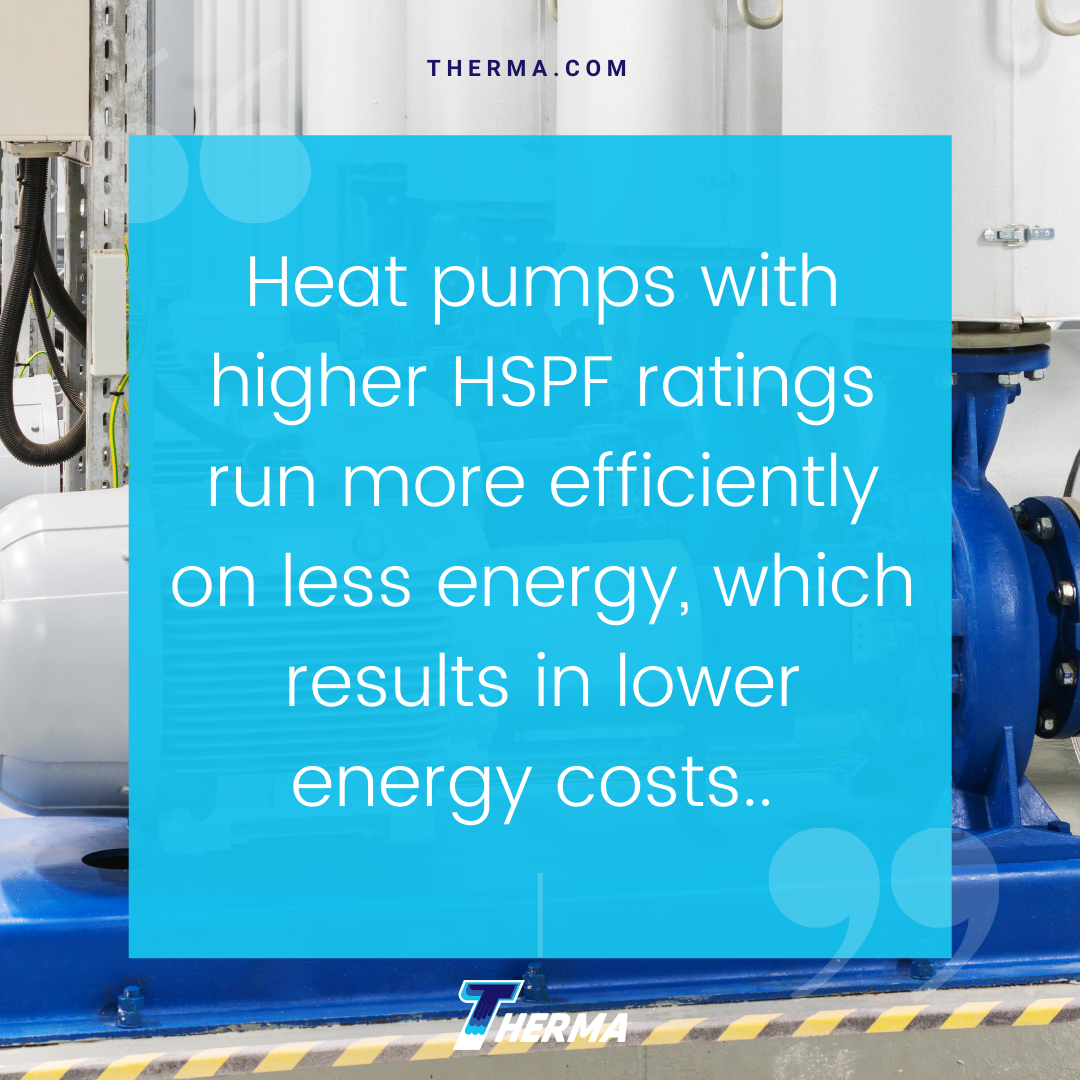by Ali Kriscenski
Heat pumps are simple, effective devices that help us transform spaces into comfortable places to work and live by transferring thermal energy. Air conditioners, geothermal HVAC systems and heated swimming pools all rely on heat pumps. Understanding the energy efficiency of your heat pump and its Heating Seasonal Performance Factor (HSPF) can help you find energy savings. Here’s how.
What Is HSPF?
The HSPF of a heat pump is the total energy output (in BTUs) per an entire heating season relative to the total amount of electricity used. A higher HSPF indicates a higher level of energy efficiency and lower energy costs.
What Is A Good HSPF?
In the United States, because heat pumps use electricity, the energy efficiency is regulated. Currently, the Department of Energy (DOE) has set an 8.2 HSPF as the minimum efficiency level for air-source, split-system heat pumps. Pumps with an HSPF rating of at least 8.2 ar also awarded the ENERGY STAR® label.
3 Types of Heat Pumps

Heat pumps are used to transfer heat between outdoors and indoors. With the right system design that considers the local climate, heat pumps can be used for both heating and cooling. They can collect thermal energy from the air, water source or ambient ground temperature outside and transfer it to conditioned spaces indoors. Their efficiency makes them an optimum choice for space heating in most regions.
-
Air-Source Heat Pumps:
Air-source heat pumps utilize ducted HVAC systems to move warm air through exterior-located condenser and compressor units into interior spaces via an air handler and ductwork. This type of heating system helps condition indoor air temperatures as well as regulate humidity. They require a system of ductwork which requires additional maintenance, repairs and cleaning.
-
Ductless Mini-Split Systems:
For smaller spaces, mini-split heat pumps can provide efficient heating solutions. Like air-source heat pumps they have exterior units that draw outdoor air. The difference is they don’t rely on ductwork and instead the interior units function as air handlers and blowers to distribute heated air into conditioned spaces. Without recessed air supplies and returns, the interior units are wall-mounted and require a small amount of wall space.
-
Geothermal Heat Pumps:
Geothermal or geoexchange heating systems have grown in popularity for their efficiency, versatility and low operating costs. They utilize latent thermal energy within the ground, or even under water bodies, and distribute the heat via ductwork or radiant underfloor tubing. Geothermal systems can have higher upfront costs than other heat pump systems, but because of their energy efficiency and heat source they qualify for renewable energy incentives such as tax rebates and credits.
HSPF and Heat Pump Performance
Heat pumps offer an efficient heating solution which means the HSPF rating can make a significant impact on energy savings. When coupled with other energy saving strategies like building envelope improvements, heat pump performance can be a game-changing cost-saving strategy.
Heat pumps with higher HSPF ratings run more efficiently on less energy, which results in lower energy costs. Additionally, heat pumps can serve as cooling systems making them a cost-effective investment to meet seasonal energy demand year round. When used in cooling mode, heat pump performance is rated by Seasonal Energy Efficiency Rating (SEER).
Heat Pump System Considerations
The efficiency of heat pumps for both heating and cooling requirements can be a cost-effective solution in most regions. The considerations for building owners begin with budget objectives and energy efficiency goals. Higher HSPF rated heat pumps incur more upfront investment costs but can be offset by annual energy savings. Within an energy efficiency strategy, the costs for equipment and system upgrades can be recouped through state and federal energy improvement programs as well as renewable energy incentive programs.
Finding the Right Heat Pump for Your Building
Understanding the HSPF of heat pumps, as well as additional energy efficiency ratings can be a time- consuming task for building managers and owners. Energy planning specialists and HVAC experts can be a valuable resource to navigate the options in types of heat pumps, energy ratings and incentive program, and weigh them against your operational energy objectives. Contact Therma’s team of HVAC professionals to find the best solutions for your building.
Ali Kriscenski was trained in high-performance building design at Boston Architectural College. She has worked with leading architecture and construction firms in NYC and New England and served on the executive team at the Forest Stewardship Council International. She was the managing editor at Inhabitat and has worked pro bono for the Green Building Institute, ISEAL Alliance and Habitat for Humanity.
Sources
U.S. Energy Information Association – Efficiency requirements for residential central AC and heat pumps to rise in 2023
U.S. Department of Energy – Explaining Central Air Conditioner & Heat Pump Standards
Lennox – Heating Seasonal Performance Factor (HSPF)
Energy.gov – Operating and Maintaining Your Heat Pump
DSIRE – Database of State Incentives for Renewables & Efficiency®
Green Energy Consumers Alliance – All About Heat Pumps









